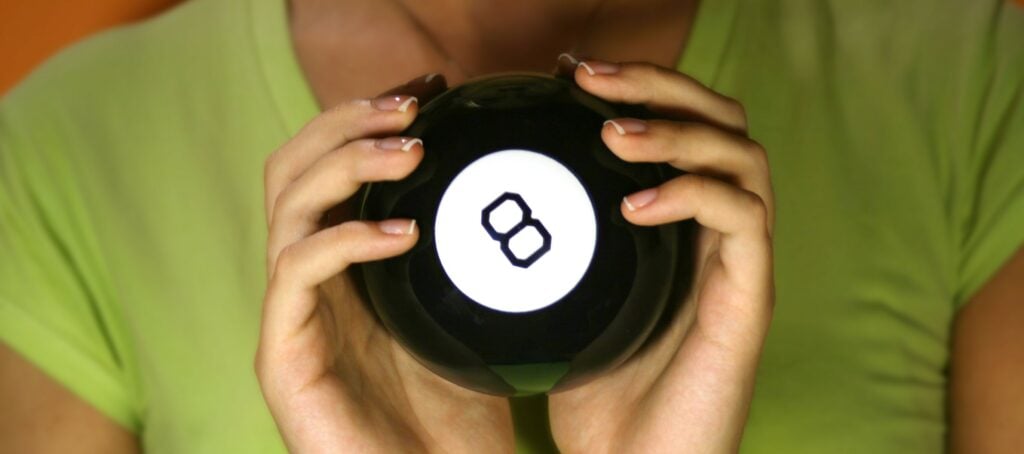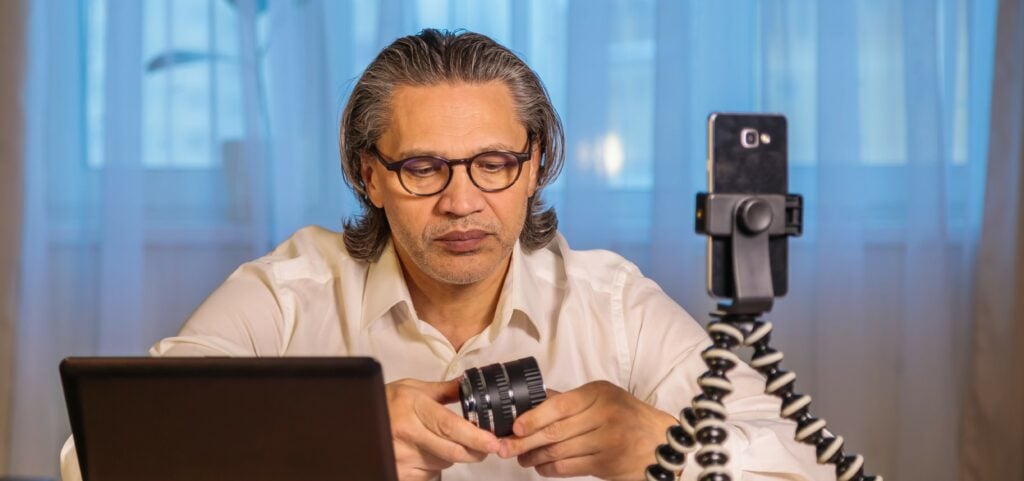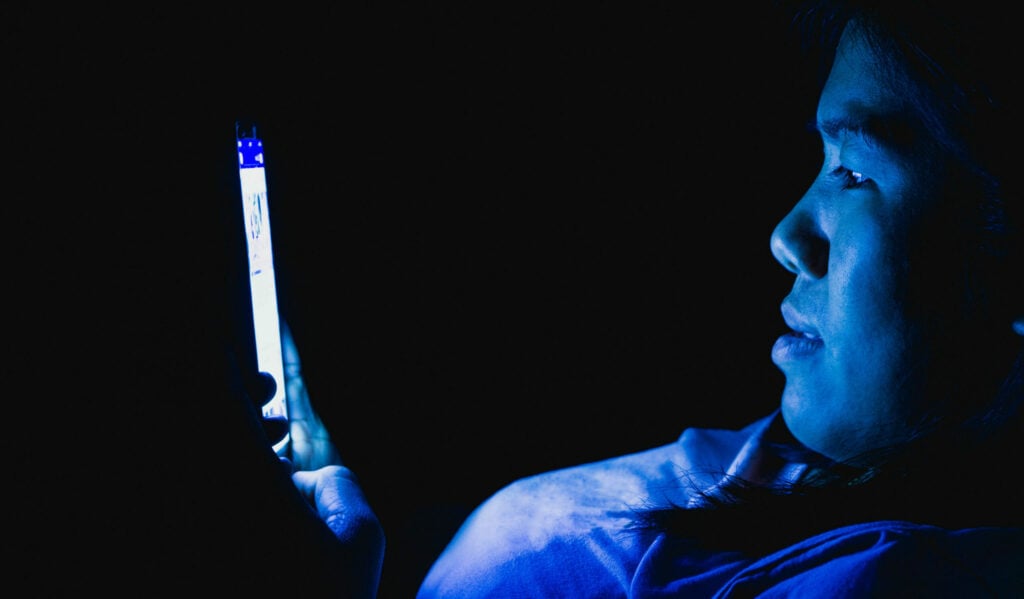Everyone’s a TikTok therapist
Reviewed by Brooks Baer, LCPC, CMHP


On the ride back from her part-time job, my teenage daughter informs me she has something called depersonalization disorder, a condition in which a person sometimes feels disconnected from their body. I ask how she knows this, already suspecting the source, and she confirms: TikTok. Last week, her sister was convinced she has attention-deficit/hyperactivity disorder (ADHD) because she often finds herself staring out the window during math class. After we get home, I Google my way into feeling certain I have anxiety related to both these conversations.


My girls and I are engaged in the latest version of an age-old practice: self-diagnosis. Before the internet, this type of fretting looked different. Maybe it took the form of folk wisdom from a grandparent, advice from a trusted friend, or an entry buried deep in an encyclopedia.
Then along came the world wide web, and with it a host of diagnostic tools: Most notably WebMD, which had 25.2 million monthly visitors less than a decade after it launched in 2005.1 Today this trend has migrated to the world of mental health, and little snippets of video carry more weight than the DSM-5.
The rise of TikTok therapy
On social media, mental health diagnostic tools center more on communities and influencers than on specific symptom checkers.2 Commonly called “TikTok therapy,” this trend is named after the social app that houses millions of videos on topics including mental health—but the definition also extends to other social media, like Instagram and YouTube.
It works like this: A community forms around a specific disorder and hashtag, often with an influencer at the heart of it. The hashtag #BPD (borderline personality disorder), for example, generates billions of views despite how rarely the condition is diagnosed.3 A quick TikTok search leads to thousands of people sharing their takes on life with BPD. The app’s algorithm then feeds users similar videos on repeat every time they sign in.
This endless scroll of videos about mental health, likely intended for education (from trained professionals) or community and clicks (from everyone else), has become a gateway to self-diagnosis.
After enough exposure to this type of content, teens like mine might recognize a symptom or two in themselves—and next thing you know, they’re telling you what conditions they have. It’s not just teens who fall into the trap, by the way: Plenty of adults do it too.4
A trend born of necessity
Although TikTok and other platforms preceded the COVID-19 lockdowns in 2020, they gained a lot of momentum during that time. The pandemic created perfect conditions for a mental health crisis: Anxiety rose exponentially as help became harder to find. Because of the growing crisis and related demand, there was a shortage of mental health professionals.5
People often had to wait months for an appointment, and those who managed to get one may have found themselves unable to afford it. Almost 10 million US workers lost their jobs in 2019 and 2020, leaving many without benefits that might have covered mental health treatment.6 With nowhere else to turn, they turned to TikTok and other social media to find support.
Can TikTok therapy raise mental health awareness?
Bonnie Zucker, PhD, a psychologist in Los Angeles who specializes in anxiety, says that these social media communities and conversations can have a number of positive outcomes. For starters, she explains, they can help reduce stigma around mental health in the following ways:
People feel seen and heard. “Before the internet, a lot of people were suffering in silence, and they didn’t know what was wrong with them,” Zucker says. “They would think, ‘I’m the only one who has this problem.’” In the case of obsessive-compulsive disorder (OCD), she explains, “people may have strange or scary intrusive thoughts about wanting to do something outside of their personality.” The volume of OCD discourse on TikTok can help them realize they’re not alone in experiencing these symptoms, which can be life-changing.
People may seek treatment earlier. While watching a TikTok video or reading the comments, someone might recognize their own symptoms and seek out a professional diagnosis. “You may wonder why you’re daydreaming so much, or why you have to reread the same paragraph in a book,” Zucker says. “This can lead to wondering, ‘Do I have ADHD?’ and that could be a foray into treatment.” For Zucker and other mental health professionals, getting someone into the proper treatment program is the goal, and TikTok can serve as a stepping stone.
People are talking more about mental health. As a Gen Xer, I remember clearly how shameful it seemed to talk about mental health. People seldom did, and Hollywood portrayals often got it wrong.7 That’s changing, Zucker says: “Overall, there’s been a positive shift in people’s awareness. It feels like mental health is such a part of day-to-day language.” She witnessed this firsthand in her work at the student counseling center at the University of California, Los Angeles, and she considers it a step forward for mental health.
The risks of self-diagnosis
It’s human nature to search for answers, but the impulse to self-diagnose can get us into trouble.
Diagnosing mental health disorders is complicated. Zucker has been diagnosing clients for almost two decades, and there are times when even she isn’t 100% sure. “Sometimes I wonder, is this obsessive-compulsive disorder or generalized anxiety disorder? It’s not always so clear,” Zucker says. “So for someone who’s just Googling around, that could be dangerous.” An accurate diagnosis, especially for a condition like BPD, is nuanced and could take years of training to spot, she says.
Self-diagnosis can produce anxiety. Experts like Zucker have also been studying the effects of self-diagnosis in the medical world. In addition to causing anxiety, searching online for medical answers can result in excessive concerns about your own physical health, a condition called “cyberchondria.”8 Zucker believes the same thing can happen with mental health, though she’s had fewer conversations in that space.
The information we find online may be wrong. Zucker was disturbed when she saw an Instagram post with misinformation about anxiety and panic. Inaccurate information given by people who aren’t qualified to diagnose or treat mental health conditions can serve to reinforce stigma around certain disorders, or even potentially result in misdiagnosis.
The danger of diagnosing others
Along with easier access to mental health terminology and resources comes the desire to use that information to diagnose others. Celebrities, politicians, family friends—no one is safe from an enthusiastic relative who’s awarded herself a PhD in TikTok therapy.
Armchair diagnosis can result in all kinds of negative outcomes, including this one: If a person decides a certain behavior indicates a specific disorder, then confidently shares their opinion with others, it can help create a false representation of that disorder.
TikTok influencers are free to engage in this kind of behavior. But clinicians who belong to the American Psychiatric Association (APA) must adhere to the Goldwater Rule, which warns against the unethical act of offering a professional opinion about a public figure.9 This rule is not enforced for other mental health professionals, but many choose to follow it as a professional standard.
Before you self-diagnose, take these steps
When it’s late and you can’t sleep, it’s tempting to browse TikTok for the latest videos about that anxiety you’ve been feeling. But before you start down that rabbit hole, make sure you understand what you’re looking at.
TikTok and apps like it have no way to tell who’s an expert and who’s not. Anyone can start an account and claim to have specialized knowledge. So before you decide to trust a piece of content about mental health, do as much research as you can on the creator. Read their biography and search for their name. Find out if they’re a licensed therapist or another kind of mental health professional.
Also keep in mind that everybody’s story is different, and theirs may not mirror yours. If you’re looking for information on TikTok about self-harm, for example, “that search can go either way,” Zucker says. “It could lead someone to seek help, or it might be triggering.” With so much information available, you should prepare yourself for either result.
Building community and confidence
It can be scary and isolating to suspect you have a mental illness. There are ways to embrace the conversation and community around what you’re feeling while still making sure the information you find is accurate and safe.
Talking with a mental health professional is a great way to feel confident in your diagnosis. To look for a licensed therapist near you, visit our directory.

Sources
1 https://www.theatlantic.com/health/archive/2012/10/self-diagnosing-on-the-proper-role-of-sites-like-webmd/263297/
2 https://www.npr.org/2022/01/23/1075216842/why-the-nature-of-tiktok-could-exacerbate-a-worrisome-social-media-trend/
3 https://www.elle.com/uk/life-and-culture/a39573245/young-women-self-diagnose-personality-disorder-tiktok/
4 https://www.womenshealthmag.com/uk/health/mental-health/a36105224/mental-health-tiktoks/
5 https://www.nytimes.com/2021/02/17/well/mind/therapy-appointments-shortages-pandemic.html/
6 https://www.pewresearch.org/fact-tank/2021/04/15/fewer-jobs-have-been-lost-in-the-eu-than-in-the-u-s-during-the-covid-19-downturn/
7 https://www.kqed.org/news/11750641/what-ferris-bueller-and-other-80s-movies-got-wrong-about-mental-health/
8 https://pubmed.ncbi.nlm.nih.gov/29324396/
9 https://psychiatry.org/news-room/goldwater-rule/
About the author
Amye Archer, MFA, is the author of “Fat Girl, Skinny” and the coeditor of “If I Don’t Make It, I Love You: Survivors in the Aftermath of School Shootings,” and her work has appeared in Creative Nonfiction magazine, Longreads, Brevity, and more. Her podcast, “Gen X, This Is Why,” reexamines media from the ’70s and ’80s. She holds a Master of Fine Arts in creative nonfiction and lives with her husband, twin daughters, and various pets in Pennsylvania.
Related articles

Social media and mental health
Social media is a powerful tool that can affect your mental health in positive...

Who’s lucky enough for Lucky Girl syndrome?
Healthy positive thinking can have emotional benefits. But as the TikTok...

How to use social media as a therapist
Going social has risks, but it can help you expand your practice and audience...

7 simple steps to a digital detox
A digital detox can help you gain control over your technology intake so you...
